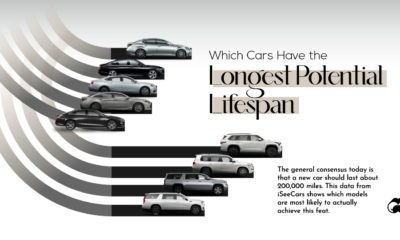He’s shooting for the stars with SpaceX, changing the future of transportation with Tesla, Hyperloop, and The Boring Company, and he’s already had a profound impact on the e-commerce and payments sectors through Paypal. It’s no coincidence that most of these are $1 billion+ companies. But, focusing only on his successes provides a superficial view of the man. To get the full perspective on his career, it is much more interesting to look at the failures and lows he has experienced. These are the moments when most people would have likely given up.
Failing Often
As every entrepreneur knows, any business venture can be upended by failures at any moment – and it is how one bounces back from those failures that counts. Today’s infographic from Kickresume shows Musk’s struggles and failures throughout his career, and how he persevered to become a modern business icon.
As the ever-quotable Winston Churchill once said: – Winston Churchill After being ousted out of his own company, having many rockets go bust, and fighting to keep Tesla and SpaceX from going bankrupt, Musk kept pushing forward with courage.
What We Can Learn
Entrepreneurs hold people like Steve Jobs, Elon Musk, and Richard Branson in high reverence. Sometimes, we even put them on a pedestal, thinking we could only dream of making such a profound impact on the world. However, this is obviously a one dimensional view. These figures are not superhuman, and the reality is that they’ve all experienced tragic failures throughout the course of their careers. They’ve been disheartened, but they bounced back. We have to recognize that success in business isn’t what it appears to be on magazine covers and headlines. Failure is an everyday part of doing business, and it plagues almost every entrepreneur in some shape or form. The difference is in how you react to it.
on
#1: High Reliability
Nuclear power plants run 24/7 and are the most reliable source of sustainable energy. Nuclear electricity generation remains steady around the clock throughout the day, week, and year. Meanwhile, daily solar generation peaks in the afternoon when electricity demand is usually lower, and wind generation depends on wind speeds.As the use of variable solar and wind power increases globally, nuclear offers a stable and reliable backbone for a clean electricity grid.
#2: Clean Electricity
Nuclear reactors use fission to generate electricity without any greenhouse gas (GHG) emissions.Consequently, nuclear power is the cleanest energy source on a lifecycle basis, measured in CO2-equivalent emissions per gigawatt-hour (GWh) of electricity produced by a power plant over its lifetime. The lifecycle emissions from a typical nuclear power plant are 273 times lower than coal and 163 times lower than natural gas. Furthermore, nuclear is relatively less resource-intensive, allowing for lower supply chain emissions than wind and solar plants.
#3: Stable Affordability
Although nuclear plants can be expensive to build, they are cost-competitive in the long run. Most nuclear plants have an initial lifetime of around 40 years, after which they can continue operating with approved lifetime extensions. Nuclear plants with lifetime extensions are the cheapest sources of electricity in the United States, and 88 of the country’s 92 reactors have received approvals for 20-year extensions. Additionally, according to the World Nuclear Association, nuclear plants are relatively less susceptible to fuel price volatility than natural gas plants, allowing for stable costs of electricity generation.
#4: Energy Efficiency
Nuclear’s high energy return on investment (EROI) exemplifies its exceptional efficiency. EROI measures how many units of energy are returned for every unit invested in building and running a power plant, over its lifetime. According to a 2018 study by Weissbach et al., nuclear’s EROI is 75 units, making it the most efficient energy source by some distance, with hydropower ranking second at 35 units.
#5: Sustainable Innovation
New, advanced reactor designs are bypassing many of the difficulties faced by traditional nuclear plants, making nuclear power more accessible.
Small Modular Reactors (SMRs) are much smaller than conventional reactors and are modular—meaning that their components can be transported and assembled in different locations. Microreactors are smaller than SMRs and are designed to provide electricity in remote and small market areas. They can also serve as backup power sources during emergencies.
These reactor designs offer several advantages, including lower initial capital costs, portability, and increased scalability.
A Nuclear-Powered Future
Nuclear power is making a remarkable comeback as countries work to achieve climate goals and ultimately, a state of energy utopia. Besides the 423 reactors in operation worldwide, another 56 reactors are under construction, and at least 69 more are planned for construction. Some nations, like Japan, have also reversed their attitudes toward nuclear power, embracing it as a clean and reliable energy source for the future. CanAlaska is a leading exploration company in the Athabasca Basin, the Earth’s richest uranium depository. Click here to learn more now. In part 3 of the Road to Energy Utopia series, we explore the unique properties of uranium, the fuel that powers nuclear reactors.






























